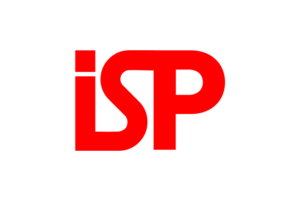The arrival of effective vaccines against Covid-19 provides hope that the pandemic that has infected over 100 million people and killed over 2.5 million can be brought under control. But that will not happen while much of the world’s population remains unvaccinated. In largely unvaccinated areas, the virus will continue to spread and mutate, causing sickness and deaths and producing new lethal variants that will spread to more fully vaccinated countries. We are seeing this now, as highly transmissible and resistant variants have emerged in the UK, Brazil, and South Africa.
No one will be safe until everyone is safe.
But that message is not being heeded by affluent countries and pharmaceutical corporations that dominate manufacturing and distribution of the vaccines.
Big Pharma
The pharmaceutical industry has a deserved reputation for profiteering to the detriment of the public good, and it’s at it again. Pfizer expects profits of $15 billion from vaccine sales this year, while Moderna’s stock price has soared. Oxfam estimates that universal vaccine access requires a price under $3.40 per dose, but Pfizer and Moderna charge five times that, pricing their coveted vaccines too high for low and middle-income countries to afford an adequate amount. (AstraZeneca is the exception: it prices its vaccine at $2 to $5 per dose.)
Consequently, vaccines are acquired disproportionately by high income countries, who hoard supply. The US, the UK, and a few others have bought or reserved rights to well over a billion more doses than they need to vaccinate their entire populations. Rather than donating excess doses, they are buying up the rights to still more vaccine.
The U.S. position was expressed by a Biden administration official quoted in the February 18 New York Times: “The United States will not share vaccines now, while the domestic vaccination campaign is expanding.”
In contrast, over 100 countries have yet to administer any vaccine. Vaccination of health workers in sub-Saharan Africa and parts of Asia has barely begun. Most of the world’s masses have little prospect of getting vaccine from Big Pharma this year.
Covax
In anticipation of such a scenario Covax, a vaccine-sharing alliance sponsored by the World Health Organization, last fall set a goal of acquiring and distributing 2 billion doses to 142 developing nations in 2021. Covax estimates that it needs to raise $33 billion to meet its target. It has only raised one-third that amount. G7 countries have only contributed $7.5 billion. Pharmaceutical corporations have pledged to make 2 billion doses available, but it’s not likely to happen this year, as the US and friends outbid Covax for available vaccine. Covax now projects that by the end of May, it will only have supplied enough vaccine to vaccinate 3.3% of the population of 142 developing nations. Covax goals are worthy, but it’s had great problems delivering on them, and even in the unlikely event that it acquires its 2 billion dose target this year, that would only be enough to vaccinate 20% of the population of its 142 target countries. It’s not negligible: at a minimum, Covax will provide enough vaccine to ensure that health workers and some of the most vulnerable have access to vaccination. But a lot more is needed.
Low and middle-income countries are scrambling on their own to find vaccine sources. Unable to afford the Pfizer and Moderna vaccines and getting only a small amount of their needs from Covax, they have been forced to look elsewhere.
Alternative vaccine sources
China, Russia, and India are exporting vaccine, and Cuba (in collaboration with Iran) is conducting clinical trials on multiple candidate vaccines.
Russia has reported deals to supply 1.2 billion doses of its Sputnik V vaccine abroad this year. Sputnik V is recognized to be highly effective, but limited manufacturing capacity makes it unlikely that anything close to the target of 1.2 billion doses this year will be reached.
Four leading Chinese vaccine manufacturers have pledged to supply about 500 million doses abroad this year, targeting low and middle-income countries. Inoculation with Chinese manufactured vaccines are already under way in more than 30 countries. Some vaccine from China is donated; some is sold for cash; some is sold with debt financing.
China of course expects to make foreign policy gains from vaccine diplomacy, and much of it may not be benevolent. For example, opposition Turkish legislators are accusing the Erdogan government of selling out China’s viciously repressed Uighur minority in exchange for access to Chinese manufactured vaccine.
Chinese vaccine manufacturers have not made public any detailed results from Phase III clinical trials, and the summary figures they have presented have not been impressive.
For most of the world, there’s little choice: in the words of an Egyptian official: “Vaccines, particularly those made in the West, are reserved for rich countries. We had to guarantee a vaccine. Any vaccine.” And the right-wing Serbian nationalist Aleksandar Vucic commented: “Did we turn to the Russians and the Chinese? You have built very expensive lifeboats for you. And whoever is not rich and is small, is condemned to sink with the Titanic.”
Even under the wildly optimistic scenario that Covax, Russia, and China all meet their ambitious production targets, only about 40% of the population in the 142 developing countries would be vaccinated this year. In contrast, the US, the UK, Israel, the UAE and a few other affluent countries expect to vaccinate their entire adult populations by fall. (Because of manufacturing backlogs and bureaucratic red tape, EU countries are lagging in acquisition of vaccine; some EU countries are trying to make their own deals.)
Likely scenario
It’s likely that the following scenario will play out: after the US and its affluent friends are fully vaccinated, more first generation (i.e., this year’s) vaccine will be made available to developing nations – some excess doses donated from the US et al, more made available by pharmaceutical companies, perhaps at cut rates. But by then, it’s likely that new variants resistant to this year’s crop of vaccines will have emerged, and in response Western pharmaceutical companies will be producing booster shots and second-generation vaccines effective against these new variants. The US and friends will corner the market on these. This could recur over and over, with the haves being the first to get protected and the have-nots being left unprotected again and again.
There are alternatives
This does not have to be. The rapid development of the Covid-19 vaccines shows what can be done when the research community shares information and works cooperatively. It gives us a glimpse of what could have been done over past decades when Big Pharma, acting as rent-collecting patent holders, blocked development.
Vaccines might have been developed in advance of the pandemic, including vaccines capable of stimulating immunisation against a wide range of coronaviruses. For example, five years ago virologists at Baylor University College of Medicine applied for funding to develop a vaccine that would be effective against all coronaviruses – a pancoronavirus vaccine. They were denied funding. Now such research is underway. Research is further along on developing vaccines effective against any SARS-Cov-2 variant. Clinical trials will soon be under way on antiviral nasal inhalants capable of preventing infection by blocking the virus’s entry.
Such research should take place in all health-related areas, and it should be done collaboratively with knowledge freely shared. It shouldn’t take a pandemic to make that happen. The resulting products should likewise be made available to all, especially those most in need. The Covid vaccines should not be the intellectual property of Big Pharma corporations, sequestered behind patent walls. They should be in the public domain, freely accessible, no profits taken. More biotechnologically advanced countries should help others to develop manufacturing and distribution capabilities. Vaccine should be made globally available, not hoarded by the rich countries and denied to poor ones.
Covid-19 may not be the worst health threat we face in the near future. In the past twenty years, we have seen Sars, Mers, and now Sars-CoV-2 (the virus responsible for Covid-19). The pharmaceutical industry has demonstrated that it won’t be ready in advance, will only act if it is guaranteed gigantic profits, and then will act in ways that favor the rich and put the poor in harm’s (and death’s) way.
What’s needed is a reorganisation of the way health care, public health, and biomedicine is organised and delivered, locally and globally. Human lives should not have a price tag; health should not be sacrificed to profit. To make this happen will require a radical reorganisation of social priorities and society itself. It’s not too soon to organise and fight for that.
Courtesy Europe Solidaire Sans Frontières



